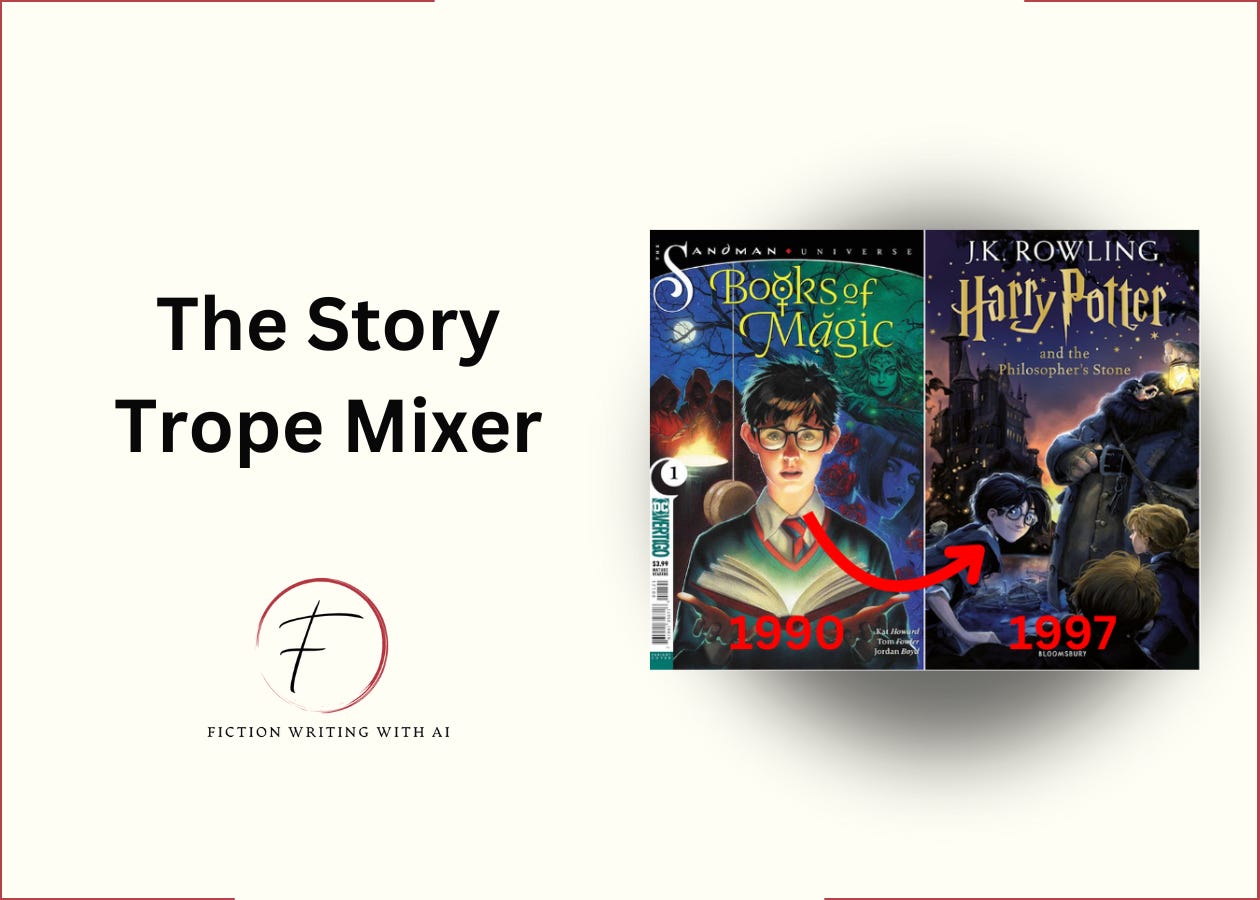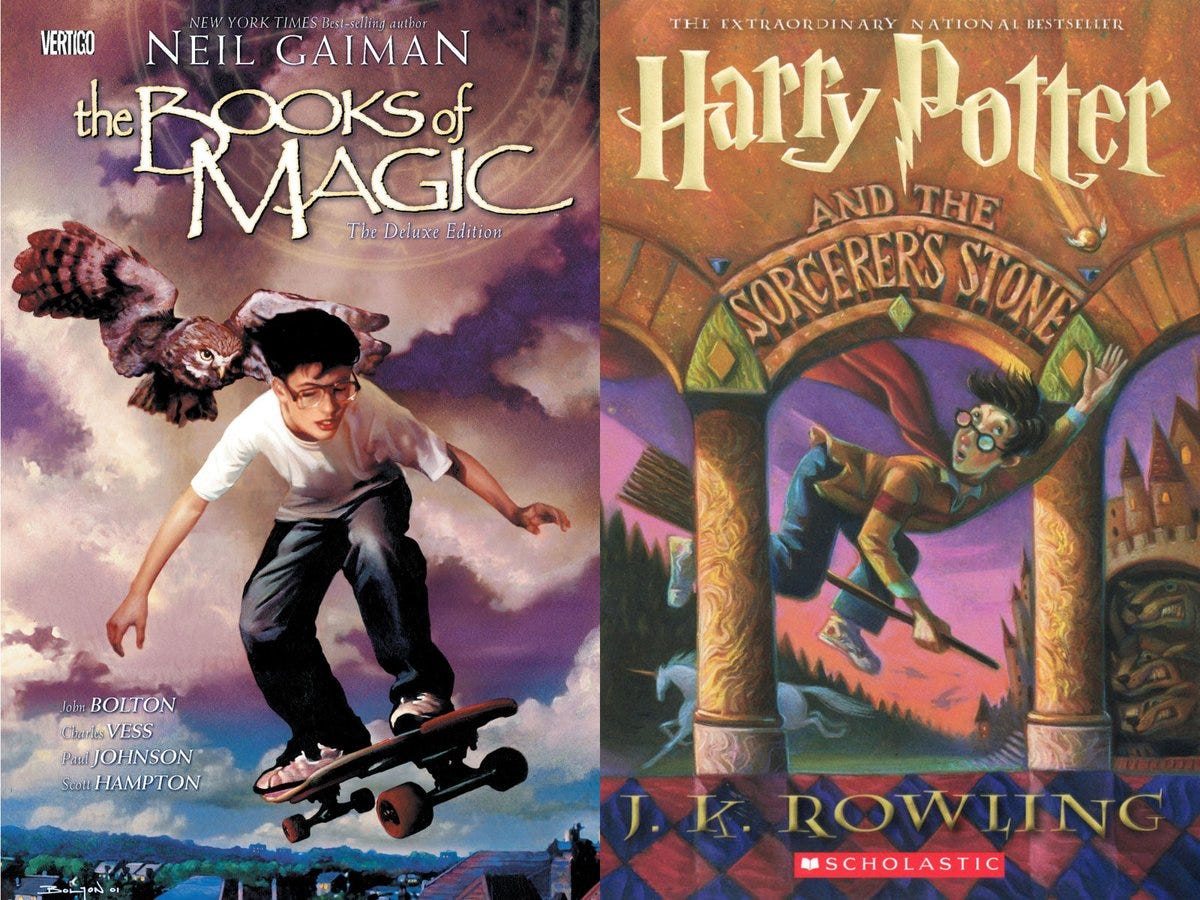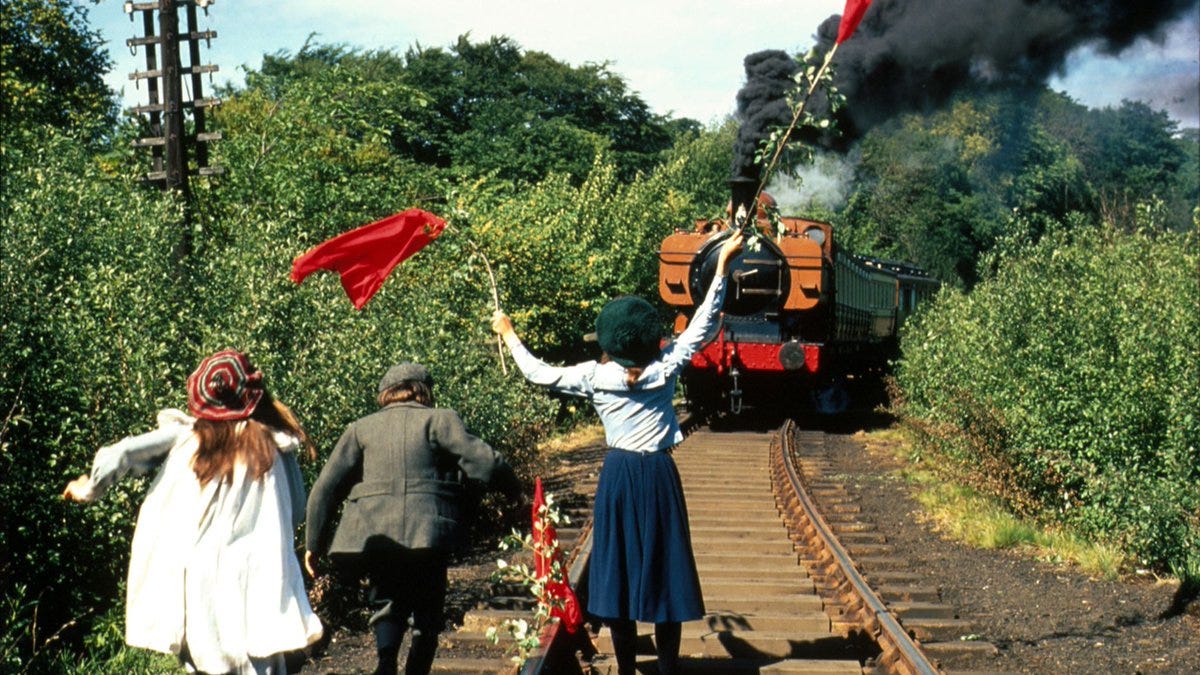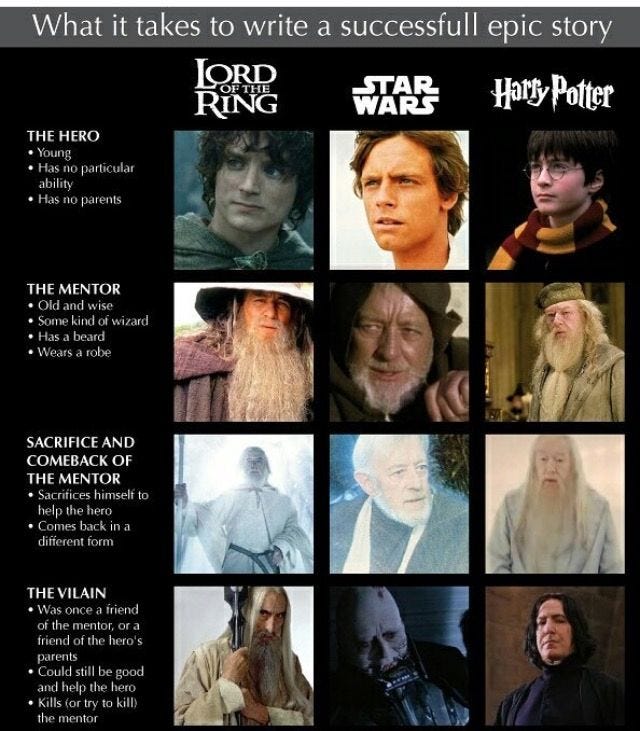Sponsored By: The Writing Game for Storytellers
Think writing a book is a marathon? It doesn’t have to be.
With The Writing Game, you’ll build a consistent writing habit and track your progress with ease. Set your Sacred Hours, show up daily, and watch your book take shape—one hour at a time. Turn your writing process into an addictive game and hit your creative goals faster than you thought possible.
Click here to start leveling up with The Writing Game for $49.
Is J.K. Rowling A Copycat?
Stephen King, Neil Gaiman, and Orson Scott Card all said "Nope."
But I’ve found 5 crazy similarities I can’t shake.
Borrowing from other stories is nothing new—writers have been doing it for centuries. The real trick is taking what works and putting your own spin on it. Which is exactly why I created the AI prompt at the end of this post. It’s designed to help you remix classic story tropes into something fresh for your own writing—just like Rowling? (You’ll have to decide for yourself.)
Let’s take a look at the resemblances.
1. A Young Male Wizard
In Neil Gaiman's The Books of Magic (1990), you meet Tim Hunter.
Messy dark hair & glasses
Discovered he's a wizard at 12
Gifted a magic owl called Yo-Yo
Mentored by trenchcoat-clad mages
Does this remind you of a wizard from Hogwarts?
2. Orphaned
Harry Potter—the orphaned Chosen One destined for greatness—is well-covered ground in fiction.
King Arthur
Frodo Baggins
Luke Skywalker
Check out the similarities between Harry and Luke Skywalker's story arc
3. Meets A Mentor
Wizard schools predate Hogwarts by DECADES.
For example:
Ursula K. Le Guin's Earthsea series (1968) has a school for wizards on Roke Island. And Jill Murphy's The Worst Witch (1974) follows Mildred Hubble at Miss Cackle's Academy.
Both feature:
Rival cliques
Stern teachers
Outsider protagonists
4. Finds Supernatural Help
Even the iconic Hogwarts Express wasn't original.
Trains have been used before as a metaphor for traveling between worlds so this was not unique to Harry Potter.
In The Railway Children (1906) & Murder on the Orient Express (1934), trains are used as portals to adventure.
5. Must Overcome The Villain
The Harry Potter world often feels constructed from stock parts:
A friend turned foe
Goblins & trolls from folklore
Quidditch from medieval sport
Centaurs & hippogriffs from Greek myths
Now, why is this important?
J.K. Rowling understood that people crave the comfort of the familiar.
So, her job was to sew together archetypes & tropes to create a familiar story with broad appeal.
This chart is quite interesting to think about:
Writing a great story is like cooking.
All new chefs start by using the same basic ingredients and cookbooks.
What people call "unique style" comes from years of building a solid foundation, practicing, and injecting your own twist.
As writers, we can take comfort in this.
Even J.K. Rowling—one of the best-selling writers of all time, "stole" from others to create the epic Harry Potter series.
The best creators absorb stories across genres, mediums, and eras.
Here's how:
Do not only "steal." Analyze your inspiration.
Ask yourself:
How would I do it differently?
What perspective can I add?
What personal touch can I mix in?
Repurposing like this is how you become a prolific fiction writer.
And this is where AI comes in.
How To Use The Story Trope Mixer Prompt To Create A Brand New Fiction Concept
This prompt helps you to blend proven storytelling elements to build your own unique narrative—fast.
Here’s how it works:
Keep reading with a 7-day free trial
Subscribe to Fiction Writing With AI to keep reading this post and get 7 days of free access to the full post archives.







